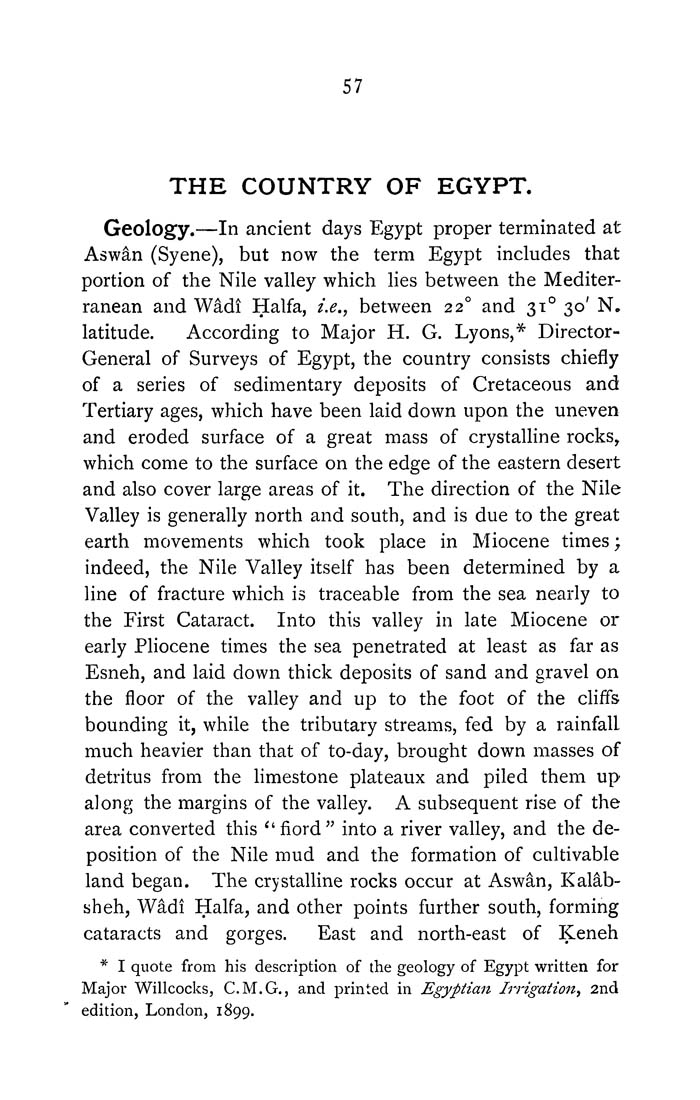57
THE COUNTRY OF EGYPT.
Geology.—In ancient days Egypt proper terminated at
Aswan (Syene), but now the term Egypt includes that
portion of the Nile valley which lies between the Mediter¬
ranean and Wadi Haifa, i.e., between 22° and 31° 30' N.
latitude. According to Major H. G. Lyons,^ Director-
General of Surveys of Egypt, the country consists chiefly
of a series of sedimentary deposits of Cretaceous and
Tertiary ages, which have been laid down upon the uneven
and eroded surface of a great mass of crystalline rocks,
which come to the surface on the edge of the eastern desert
and also cover large areas of it. The direction of the Nile
Valley is generally north and south, and is due to the great
earth movements which took place in Miocene times;
indeed, the Nile Valley itself has been determined by a
line of fracture which is traceable from the sea nearly to
the Eirst Cataract. Into this valley in late Miocene or
early Pliocene times the sea penetrated at least as far as
Esneh, and laid down thick deposits of sand and gravel on
the floor of the valley and up to the foot of the cHffs
bounding it, while the tributary streams, fed by a rainfall
much heavier than that of to-day, brought down masses of
detritus from the limestone plateaux and piled them up
along the margins of the valley. A subsequent rise of the
area converted this ^'fiord" into a river valley, and the de¬
position of the Nile mud and the formation of cultivable
land began. The crystalline rocks occur at Aswan, Kalab-
sheh, Wadi Haifa, and other points further south, forming
cataracts and gorges. East and north-east of Keneh
^ I quote from his description of the geology of Egypt written for
Major Willcocks, C.M.G., and printed in Egyptian Irrigation, 2nd
edition, London, 1899.
|








